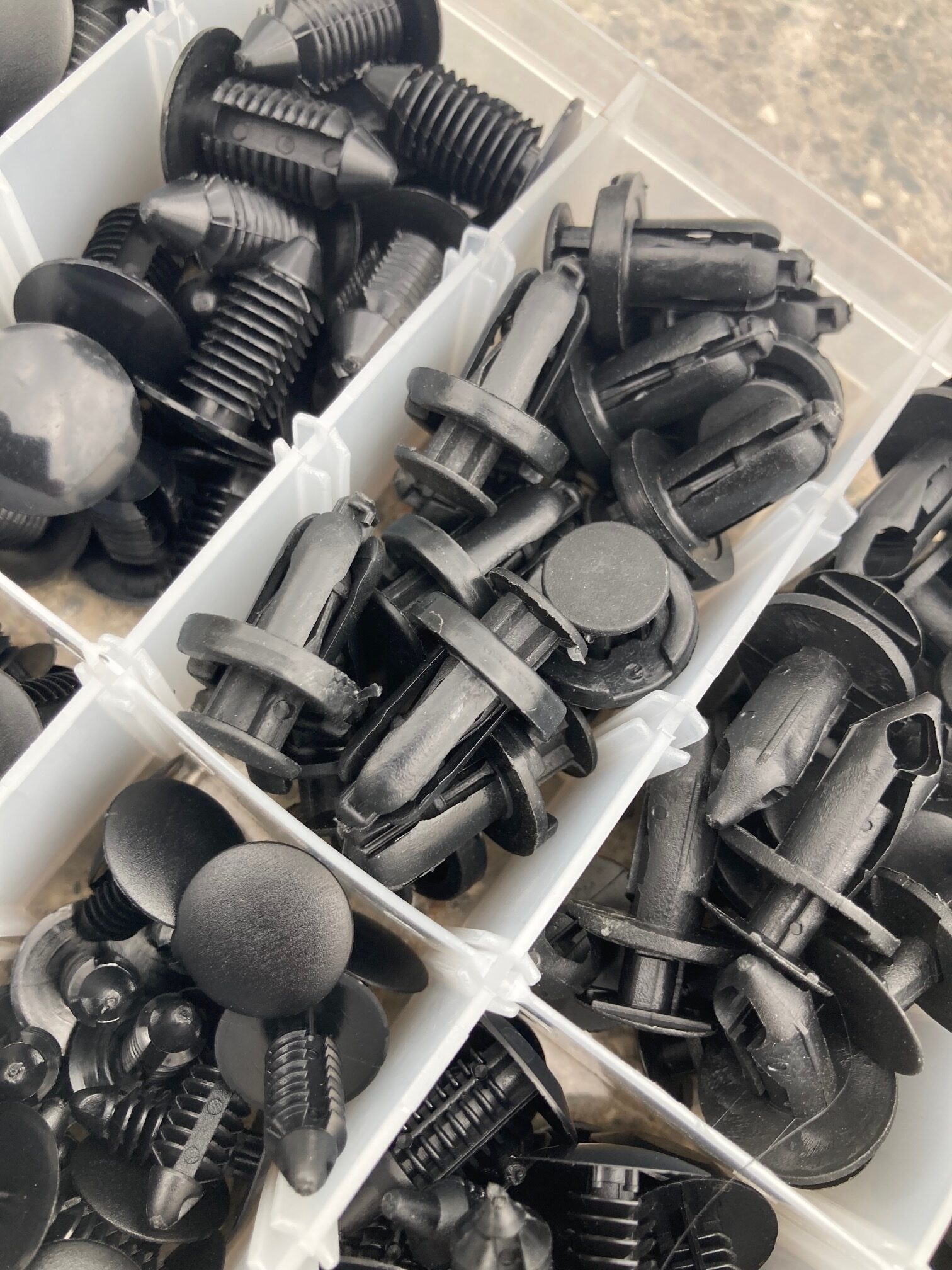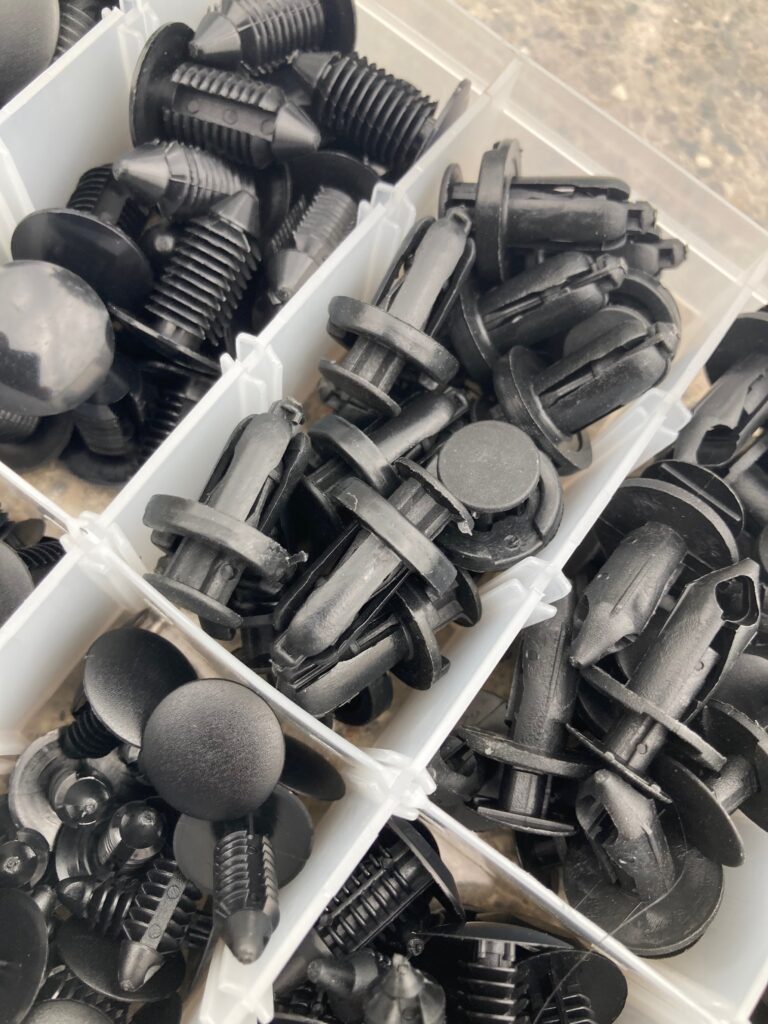
Automotive clips and retainers might not seem important at first glance. But for anyone with an older vehicle, these small parts are crucial. They help hold various components in place, making your car safer and less prone to wear and tear.
Summary List
- Top Pick Overall: GOOACC – GRC-33 240PCS Bumper Retainer Clips Car Plastic Rivets Fasteners Push Retainer
- Top Alternative: QIIYCCE-120PCS Car Clips
Top Picks: Automotive Clips and Retainers
Top Pick Overall: GOOACC – GRC-33 240PCS Bumper Retainer Clips Car Plastic Rivets Fasteners Push Retainer
[lasso id=”5497″ link_id=”2515″ ref=”amzn-c-grc-33-240pcs-bumper-retainer-clips-car-plastic-rivets-fasteners-push-retainer-kit-most-popular-sizes-auto-push-pin-rivets-set-door-trim-panel-fender-clips-for-gm-ford-toyota-honda-chrysler” sitestripe=”true”]If you’re someone who enjoys working on your own vehicles and needs a comprehensive kit of retainer clips, the GOOACC – GRC-33 240PCS Bumper Retainer Clips set should be on your radar. This kit offers universal compatibility, featuring 12 popular sizes that fit an array of brands including Ford, GM, Chrysler, Toyota, and Honda.
With 240 pieces, you’re less likely to make multiple trips to an auto parts store looking for the right fasteners. It’s a time and money saver, complete with a free fastener remover to help you get the old clips out. The quality of the materials used in this set is commendable, offering durability so that these push-type retainers won’t easily break or crack.
The set comes in an organized plastic box with 12 compartments, making storage and accessibility a breeze. While the kit includes a wide variety of clip types, it’s important to note that the part index may not directly correspond with your car make. You’ll need to match the clips by appearance, length, and shape to find the exact fit for your specific vehicle. This can be a bit challenging but is well worth the effort given the wide range of applications these clips have.
However, be cautious about older vehicles, as the existing clips might have become brittle over time and are more likely to break during replacement. The tools included are handy for removing old clips without causing damage, but they may not be the most durable option out there. Overall, for the DIY mechanic or even the professional, this set provides a comprehensive solution for a range of retainer clip needs.
Top Alternative: QIIYCCE-120PCS Car Clips
[lasso id=”5495″ link_id=”2516″ ref=”amzn-qiiycce-120pcs-car-clipsplastic-rivets6-popular-sizes-of-car-body-fixed-clip-bumpersand-replacement-parts-of-fenders-are-applicable-to-most-models” sitestripe=”true”]As our top alternative for automotive clips and retainers, the QIIYCCE-120PCS Car Clips kit is worth considering. The kit offers universal compatibility, fitting a variety of car brands such as Ford, GM, and Toyota. It includes six different sizes to suit diverse applications like door trims, fenders, and bumpers. Constructed from durable materials, the clips can handle the usual wear and tear although they’re not indestructible, reflecting their affordable price.
One of the notable benefits of this 120-piece set is that it provides a cost-effective way to perform multiple minor repairs, potentially saving you trips to the auto parts store. The kit also comes with a rivet remover, making it easier to remove door panels and trim clips without causing damage.
Common Locations for Automotive Clips, Retainers, and Rivets in Your Vehicle

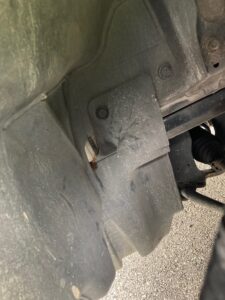
These before-and-after images illustrate the significance of having secure clips and retainers for your vehicle’s under-tire guard. The ‘Before’ image reveals a guard that is loosely fitted due to a missing clip, posing potential hazards. The ‘After’ image shows the same guard securely in place, thanks to the replacement clip. The difference emphasizes the importance of regularly checking and maintaining these small but crucial components.
Automotive clips, retainers, and rivets are commonly found in various parts of vehicles to secure components and facilitate assembly. Here are some typical locations where you might find them:
- Door Panels: Clips and retainers often hold the interior door panels in place.
- Bumpers: Both front and rear bumpers may be secured with clips and rivets.
- Fenders: These can be held in place with specialized clips and retainers to ensure a snug fit.
- Interior Trim: Dashboard, console, and other trim elements may be fitted with clips for easy removal and secure placement.
- Engine Bay: Various parts under the hood, such as air intake assemblies and covers, may be secured with clips, retainers, or rivets.
- Radiator Shields: The guards or shields around the radiator can be attached with clips and retainers.
- Undercarriage: Splash guards and other protective elements may be secured with rivets and clips.
- Grille: The front grille of many vehicles is often attached with specialized clips or retainers.
- Side Skirts and Rocker Panels: These can be attached with clips or rivets to stay in place securely.
- Seats and Seat Covers: Some vehicles use clips and retainers to keep seat covers and even the seats themselves in place.
- Glove Box: The glove box lid and the assembly itself may also be held in place with clips.
- Roof Lining: The interior roof lining may be held up with clips and retainers.
Each vehicle is different, so the locations and types of clips, retainers, and rivets can vary. Always refer to your vehicle’s manual or consult an expert if you’re not sure.
Types of Automotive Clips and Fasteners
Automotive clips and fasteners are essential components that hold various parts of a vehicle together, from trim panels and linings to electrical harnesses and other fixtures. Due to the vast variety of parts and assembly requirements in different vehicles, there are numerous types of automotive clips and fasteners. Here are some of the common types:
- Push-Type Retainer Clips: These are used in various applications and are designed to be pushed into place. They typically hold panels or parts together by being inserted into a hole and expanding or locking into place.
- Christmas Tree Clips: Named for their tree-like appearance, these clips are often used for holding trim, panels, or carpet in place due to their ribbed shafts.
- Screw Grommets or Nylon Nuts: Typically used alongside screws, these grommets hold screws in place, ensuring they don’t loosen over time.
- Scrivet or Scrivets (Screw Rivets): These are push-in clips that can also be tightened or removed with a screwdriver.
- Barbed Clips: These have a series of barbs that grip when pushed into place, often used for door panels or other trim.
- Spring Clips: Often used for hose connections, these clips provide a tight fit by exerting outward spring pressure once they’re clamped into place.
- U-Nuts or Speed Nuts: These clips are shaped like the letter “U” and provide a threaded connection point for screws, often used in fender or bumper installations.
- Wire Routing Clips: These clips are used to organize and hold wires or cable harnesses in place.
- Molding Clips: Specifically designed for attaching moldings on doors, windows, or other body parts.
- Panel Clips: Often used for door panels or interior trim, they come in various designs to fit the specific needs of the vehicle’s design.
- Weatherstrip Retainers: These are used to hold weatherstripping in place, ensuring a water and air-tight seal around doors or other openings.
- Bumper and Grille Clips: Designed specifically for the secure attachment of bumpers and grilles.
- Hose Clamps: Not necessarily a “clip”, but hose clamps are essential fasteners that keep hoses securely connected.
- Cable Ties or Zip Ties: While not exclusive to automotive use, these are often used in cars to bundle wires or hoses together.
This list is by no means exhaustive, as the design and use of clips and fasteners can vary widely between manufacturers and specific vehicle models. Always ensure you’re using the correct clip for its intended purpose to guarantee a secure fit and maintain the vehicle’s safety and integrity.
The Hidden Risks: Dangers of Driving with Loose or Lost Automotive Clips and Retainers
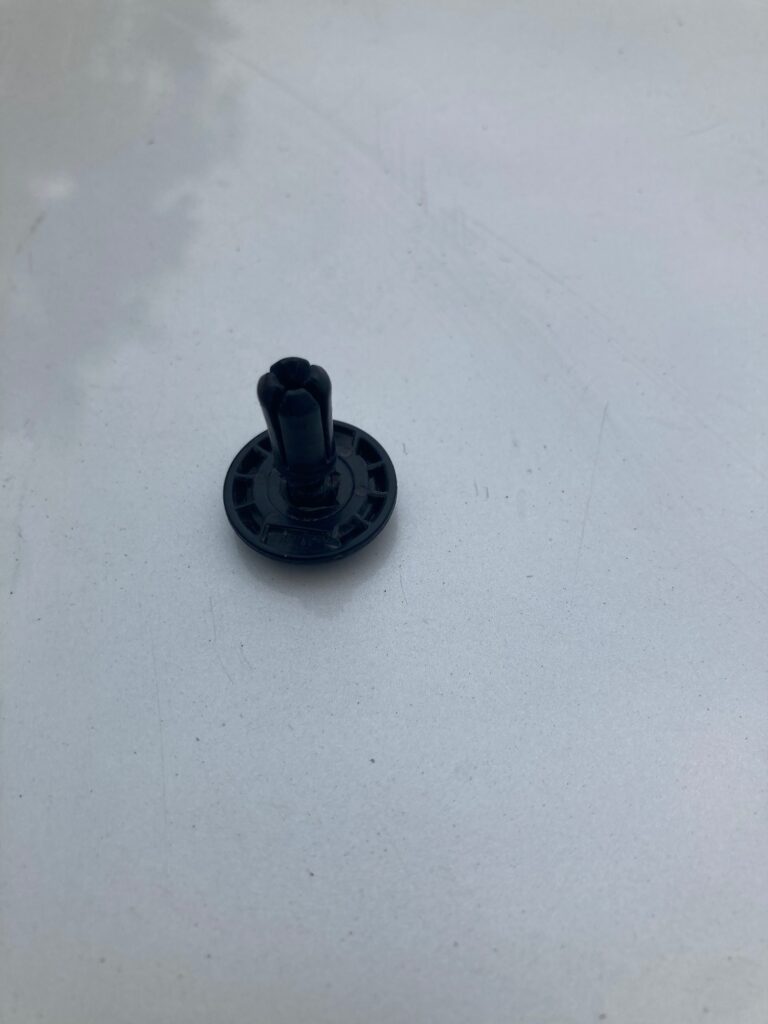
Driving with loose or missing automotive clips and retainers can pose several risks:
- Component Dislodgment: Loose parts like fenders, bumpers, or door panels may dislodge while driving, posing a hazard to you and other road users.
- Reduced Vehicle Integrity: The structural integrity of assemblies like the radiator shield and undercarriage guards can be compromised, leading to further damages.
- Increased Wear and Tear: Loose parts can rub against each other or the frame of the car, resulting in accelerated wear and potential failures.
- Aerodynamic Impact: Loose or missing panels can alter your vehicle’s aerodynamics, affecting fuel efficiency and handling.
- Noise and Distraction: Rattling and shaking from unsecured components can be distracting, which may reduce driver concentration.
- Possible Water and Debris Entry: Openings from missing clips or retainers can let water, mud, or debris into areas they shouldn’t be, potentially causing corrosion or electrical issues.
- Increased Repair Costs: What could have been a cheap fix might turn into a much more expensive repair if the issue isn’t addressed promptly.
It’s advisable to inspect and replace missing or loose clips and retainers to maintain the safety and integrity of your vehicle.
Why Automotive Clips and Retainers Matter
Automotive clips and retainers might not be the most glamorous parts in your vehicle, but they are some of the most essential. These small components are fundamental in keeping various parts of your car securely fastened. Whether it’s securing the bumper, fastening interior panels, or holding wires in place, these components perform tasks that are crucial for both safety and functionality.
These Parts are Often Overlooked. Yet, They Offer Critical Support
Automotive clips and retainers are responsible for maintaining the structural integrity of your vehicle. They may be small, but their role is mighty. A loose wire, an improperly fastened panel, or a rattling part could compromise your vehicle’s safety and performance. Additionally, these components make the process of assembly and disassembly more straightforward, allowing for easier repairs and part replacements.
The Role of Vibration
As you drive, your vehicle is subjected to various forces like bumps, uneven roads, and high speeds, all of which cause vibrations. Over time, these vibrations can cause screws to loosen and parts to wear down. This is where clips and retainers show their worth. They’re designed to withstand vibrations, keeping every component tight and secure. Without them, you risk having loose parts that could lead to malfunction or, worse, cause safety hazards.
Signs You Need New Ones
If you hear unusual rattling or notice that certain panels or parts are loose, these are warning signs that your clips and retainers may be worn out or broken. These symptoms should not be ignored, as they can escalate into more serious issues. Other signs include finding actual broken clips or retainers, or the inability to secure a panel or cover properly. Address these issues promptly to maintain the safety and integrity of your vehicle.
Types of Clips and Retainers
Clips and retainers come in various forms, mainly composed of plastic or metal. Plastic types are generally used in areas where corrosion resistance is needed, while metal types are employed in areas requiring higher strength and durability. Examples include push-type retainers, screw-type retainers, and speed nuts. Each type serves a specific function within a vehicle’s assembly, and it’s crucial to choose the appropriate type based on your vehicle’s specifications and needs.
How to Install Them
Installation is usually a straightforward process but does require attention to detail. Start by identifying the damaged or missing clip or retainer. Refer to your vehicle’s manual or consult a mechanic to make sure you purchase the right replacement part. Tools you might need include screwdrivers, pliers, or specialized clip removal tools. Ensure that you install the new component securely, so it effectively holds the relevant parts in place.
Cost-Effectiveness
Investing in high-quality automotive clips and retainers is both a practical and cost-effective solution for maintaining your vehicle. They are generally inexpensive but play a significant role in avoiding the wear and tear that could lead to costly repairs in the future. By ensuring that all panels, covers, and other parts are securely fastened, you’re extending the lifespan of these components and, by extension, your vehicle.
Automotive clips and retainers may be small, but their role in your vehicle’s safety and functionality is immense. Neglecting them could lead to a host of issues that are both unsafe and costly to repair. So the next time you’re under the hood or consulting your mechanic, spare a thought for these unsung heroes of vehicle maintenance.
The Aftermath of Vehicle Repairs: Issues with Clips and Retainers
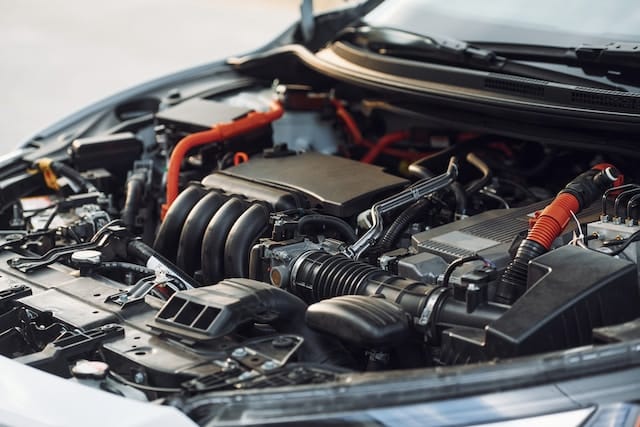
Sometimes, after bringing your vehicle in for maintenance or exceptional repairs, you may notice issues related to clips and retainers. While not extremely common, this situation can occur due to various factors, such as improper installation or the natural wear and tear exacerbated by the repair process. Below are some key points to consider:
Mechanic Error: The Human Element
Mechanics are skilled professionals but, like anyone, they can make errors. In the hustle and bustle of a busy garage, a mechanic might inadvertently fail to secure a clip or retainer properly. Such oversights can manifest as rattling noises, loose panels, or even malfunctioning components a few weeks or months after the repair.
Complications from Repair Work: Unintended Consequences
Certain types of repair work, particularly those that require the removal and reinstallation of multiple components, can inadvertently loosen clips and retainers. While the primary repair issue might be solved, the secondary consequence could be the weakening of these small but vital components.
Wear and Tear: An Accelerated Timeline
If your vehicle is older or has seen a lot of mileage, the clips and retainers might already be near the end of their service life. The act of removing and reinstalling them during repairs could hasten their demise, leading to issues shortly after the maintenance work.
Quality of Replacement Parts: You Get What You Pay For
Not all clips and retainers are made equal. If a mechanic uses lower-quality, aftermarket parts, these may not hold up as well as their OEM (Original Equipment Manufacturer) counterparts. This discrepancy in quality can become evident within weeks or months following the repair.
How to Avoid Post-Repair Issues with Clips and Retainers
- Choose a Reputable Mechanic: Always go to a certified and reputable mechanic who is known for quality work.
- Ask About the Parts: Inquire about the quality of the clips and retainers being used if replacements are needed.
- Post-Repair Inspection: After any major repair, consider performing a thorough inspection of your vehicle to ensure that everything is in place and properly secured.
If you experience issues with clips and retainers following a repair, it’s important to address them immediately to maintain your vehicle’s safety and functionality. The problems might be a minor inconvenience, but they could be symptomatic of a larger issue that should not be ignored.
FAQs: Automotive Clips and Retainers
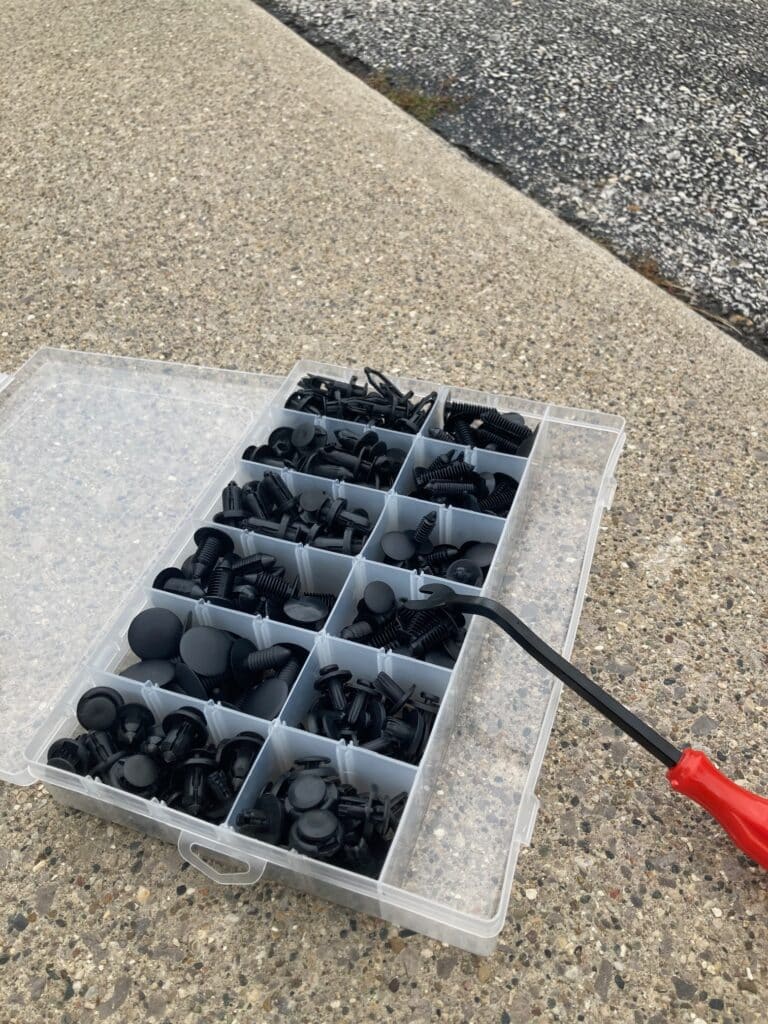
What are automotive clips and retainers?
Automotive clips and retainers are small but essential hardware used in vehicles to hold parts together securely. They are generally made from materials like plastic, metal, or a combination of both.
Why are clips and retainers important for a vehicle?
These components are essential for various reasons, including maintaining structural integrity, ensuring safety, reducing vibration, and simplifying the assembly and disassembly process.
What happens if automotive clips and retainers are not used or are damaged?
If these components are missing or damaged, it can result in loose or shaky parts, which can compromise the safety and functionality of the vehicle.
What types of automotive clips and retainers are available?
There are various types, including push-type retainers, screw-type retainers, Christmas tree clips, and speed nuts, among others. Each type has its specific use and application within the vehicle’s assembly.
How often should I check or replace these components?
The frequency for checking or replacing clips and retainers varies depending on the vehicle type, age, and usage conditions. However, it’s generally good practice to inspect them during routine vehicle maintenance.
Can I replace automotive clips and retainers myself?
Yes, many clips and retainers are designed for easy replacement. However, if you’re not comfortable performing this task or if the clips and retainers are located in hard-to-reach areas, it’s advisable to seek professional assistance.
Are there any safety considerations to keep in mind when dealing with automotive clips and retainers?
Absolutely. Always make sure to switch off the vehicle and disconnect the battery when replacing these components. Also, follow all safety guidelines provided in your vehicle’s manual or consult a mechanic if unsure.
